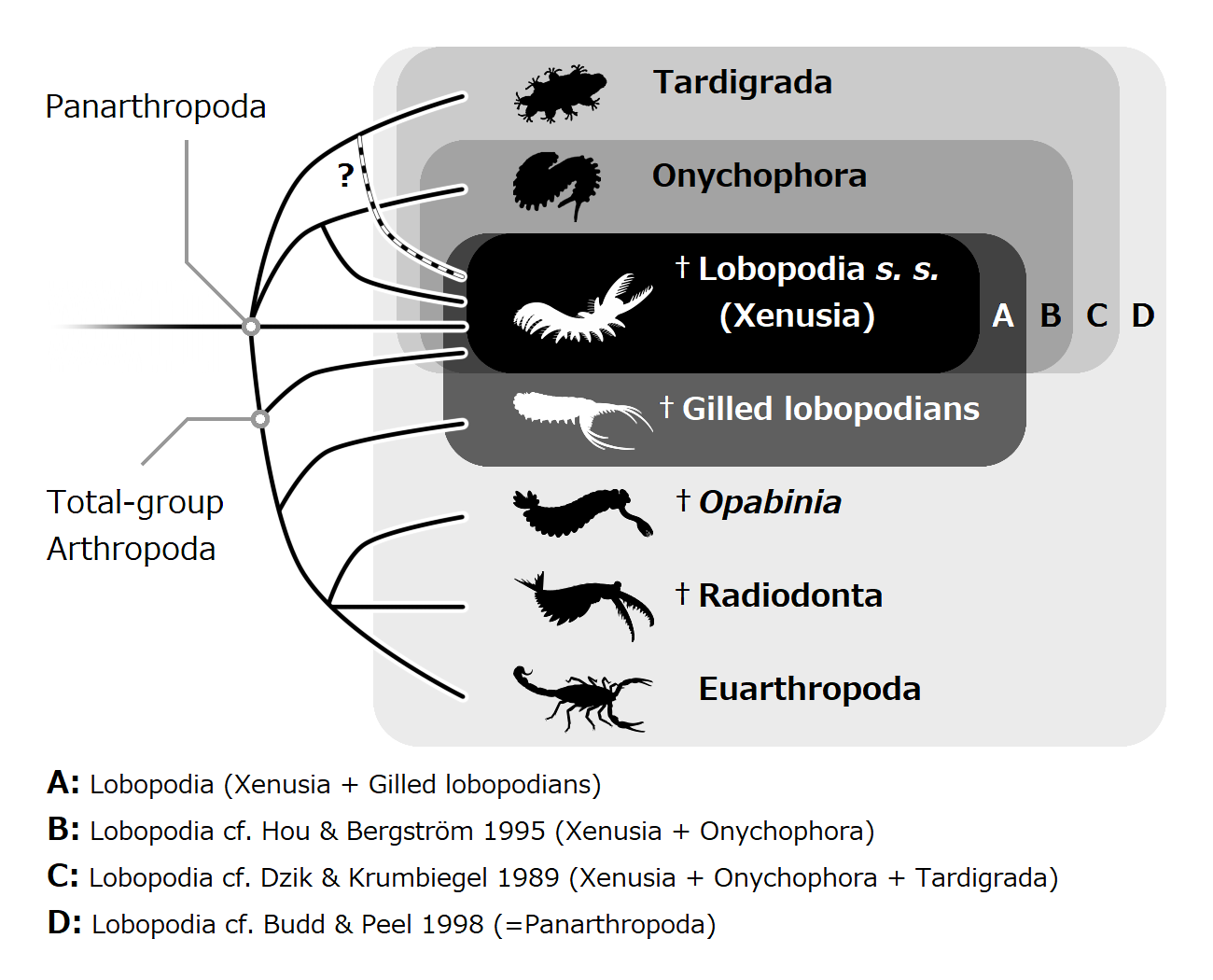|
Mobulavermis
''Mobulavermis'' () (meaning "Mobula worm") is an extinct genus of Cambrian kerygmachelid lobopodian from the Pioche Shale, the Combined Metals Member of the Pioche Formation in Nevada; USA. The type species is ''M. adustus'', known from the holotype and paratype. Etymology The generic name, ''Mobulavermis'', comes from ''Mobula'', the genus name of extant manta rays and devil rays. This draws comparison to the elongate flexible caudal spines and broad swimming flaps of ''Mobula'' rays, which resemble the outline of the new taxon. This is combined with the Latin 'vermis', which translates to "worm". The specific name, ''adustus'', is a Latin word which can mean "burnt", "singed", or "sun-burnt". This is in reference to the dramatic yellow, red, and black coloration of the two known specimens, and to the arid conditions of the type locality. Description ''Mobulavermis'' is known from two specimens which were described by McCall, (2023). The intact posterior region of t ... [...More Info...] [...Related Items...] OR: [Wikipedia] [Google] [Baidu] |
Kerygmachelidae
Kerygmachelidae is a family of gilled lobopodians (stem-arthropods with flapping trunk appendages and radial mouths) from the Cambrian period. Currently three genera are included in the family: ''Kerygmachela'' from the lower Cambrian of Greenland, '' Utahnax'' from the middle Cambrian of Utah, and '' Mobulavermis'' from the lower-middle Cambrian of Nevada. These animals are characterized by well developed frontal appendages similar to other dinocaridids like the radiodonts Radiodonta is an extinct order of stem-group arthropods that was successful worldwide during the Cambrian period. Radiodonts are distinguished by their distinctive frontal appendages, which are morphologically diverse and were used for a variety ..., except the ones present in these genera are horizontal to one another, and do not curve downward. These animals were most likely nektonic predators, using their large trunk flaps to swim in the water column, and using their frontal appendages to grab small-siz ... [...More Info...] [...Related Items...] OR: [Wikipedia] [Google] [Baidu] |
Lobopodian
Lobopodians are members of the informal group Lobopodia (), or the formally erected phylum Lobopoda Cavalier-Smith (1998). They are panarthropods with stubby legs called lobopods, a term which may also be used as a common name of this group as well. While the definition of lobopodians may differ between literatures, it usually refers to a group of soft-bodied, marine worm-like fossil panarthropods such as ''Aysheaia'' and ''Hallucigenia''. However, other genera like ''Kerygmachela'' and ''Pambdelurion'' (which have features similar to other groups) are often referred to as “gilled lobopodians”. The oldest near-complete fossil lobopodians date to the Lower Cambrian; some are also known from Ordovician, Silurian and Carboniferous Lagerstätten. Some bear toughened claws, plates or spines, which are commonly preserved as small carbonaceous fossil, carbonaceous or Small Shelly Fossils, mineralized microfossils in Cambrian strata. The grouping is considered to be paraphyletic, as ... [...More Info...] [...Related Items...] OR: [Wikipedia] [Google] [Baidu] |
Lobopodia
Lobopodians are members of the informal group Lobopodia (), or the formally erected phylum Lobopoda Cavalier-Smith (1998). They are panarthropods with stubby legs called lobopods, a term which may also be used as a common name of this group as well. While the definition of lobopodians may differ between literatures, it usually refers to a group of soft-bodied, marine worm-like fossil panarthropods such as '' Aysheaia'' and '' Hallucigenia''. However, other genera like '' Kerygmachela'' and '' Pambdelurion'' (which have features similar to other groups) are often referred to as “gilled lobopodians”. The oldest near-complete fossil lobopodians date to the Lower Cambrian; some are also known from Ordovician, Silurian and Carboniferous Lagerstätten. Some bear toughened claws, plates or spines, which are commonly preserved as carbonaceous or mineralized microfossils in Cambrian strata. The grouping is considered to be paraphyletic, as the three living panarthropod groups (A ... [...More Info...] [...Related Items...] OR: [Wikipedia] [Google] [Baidu] |


